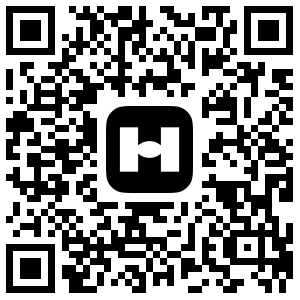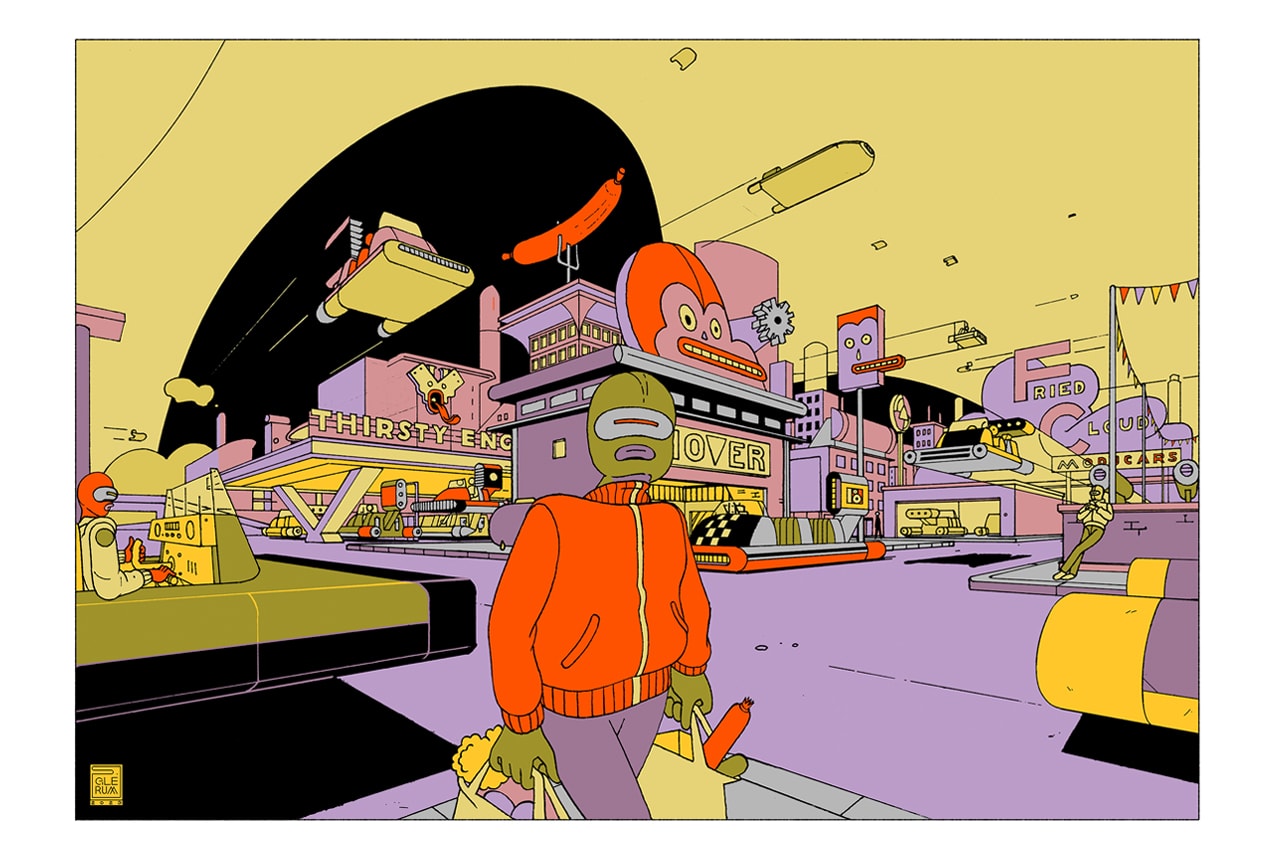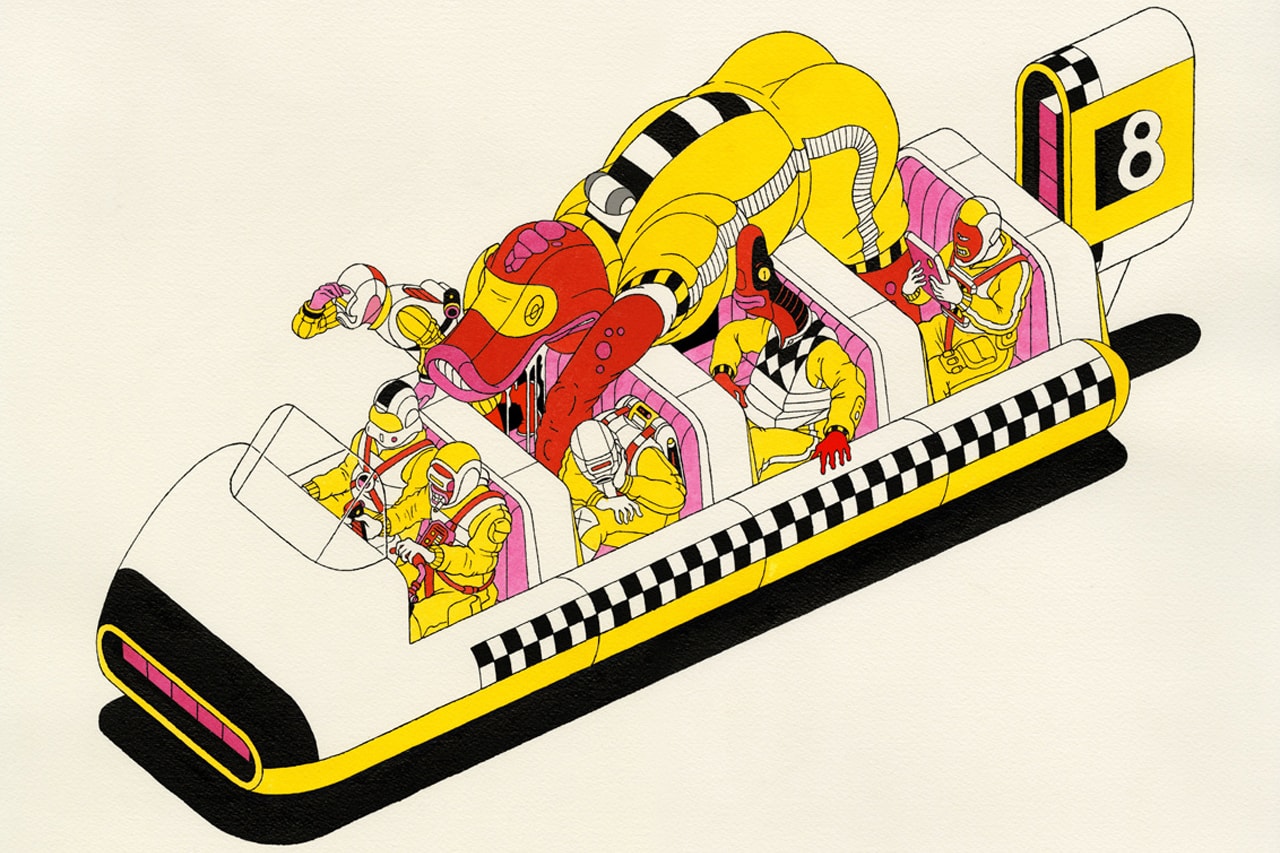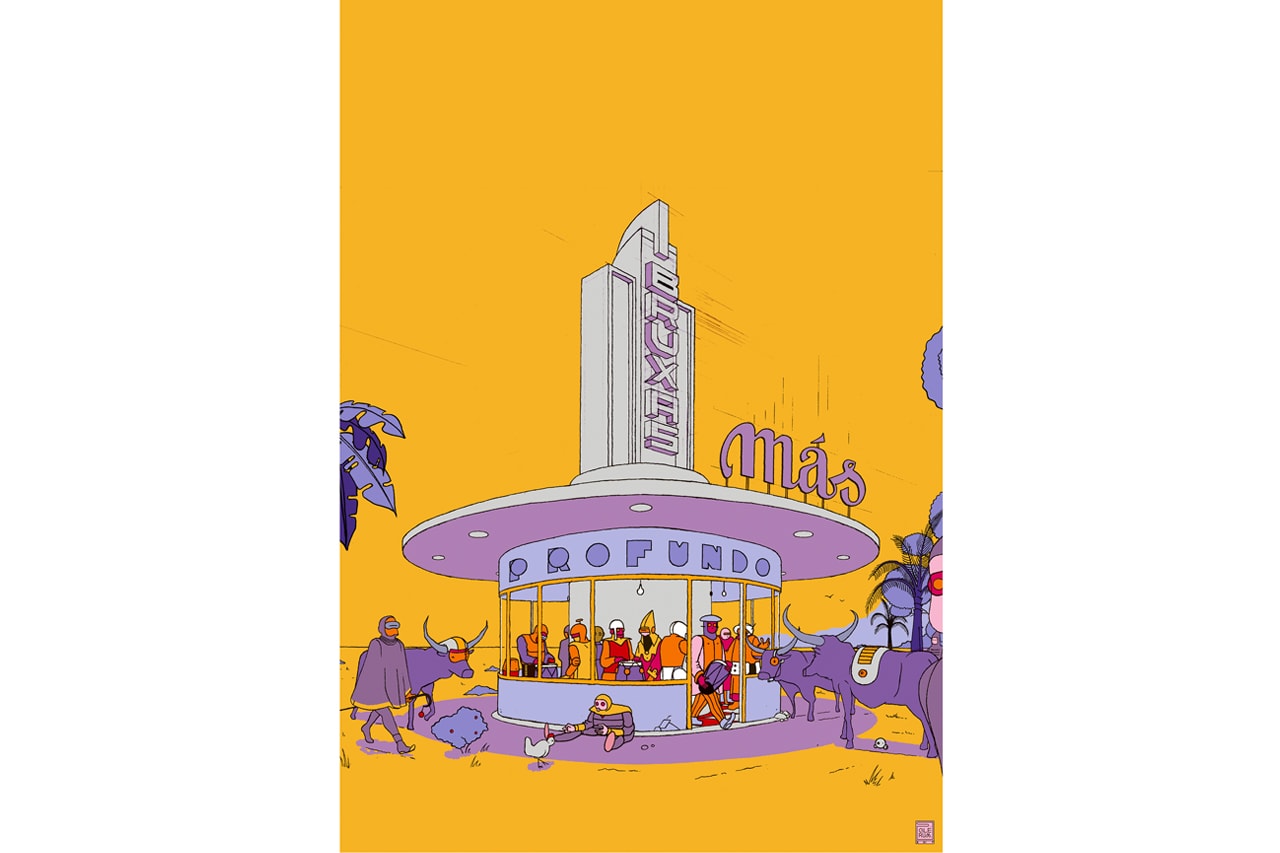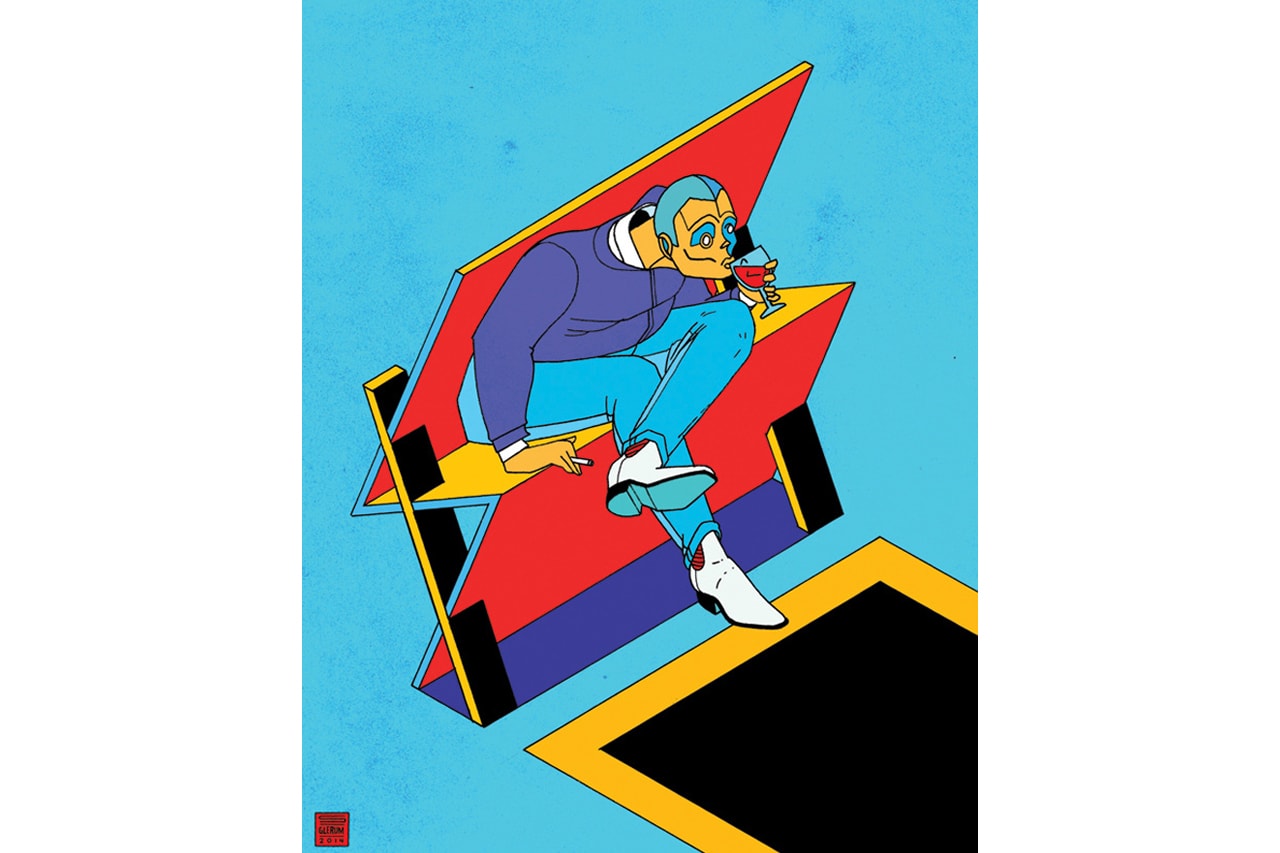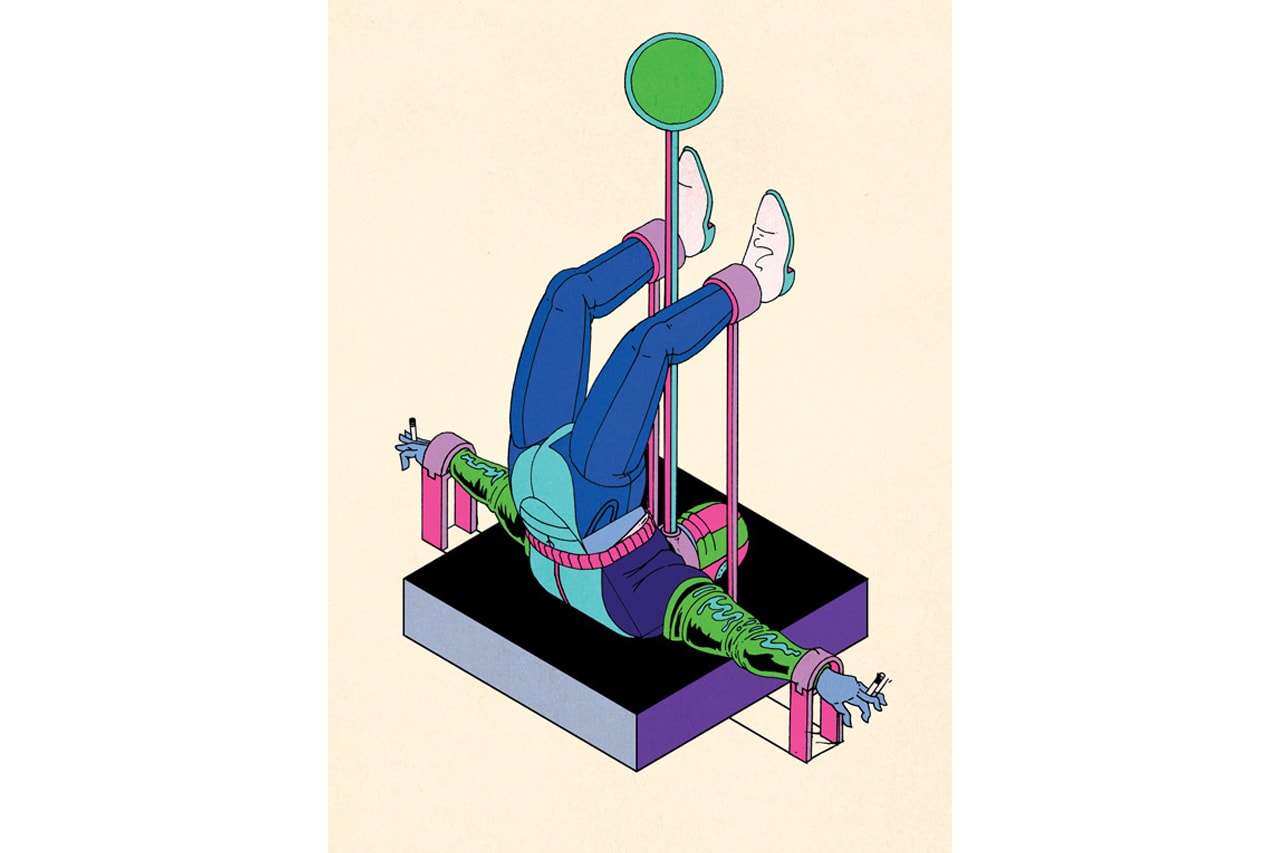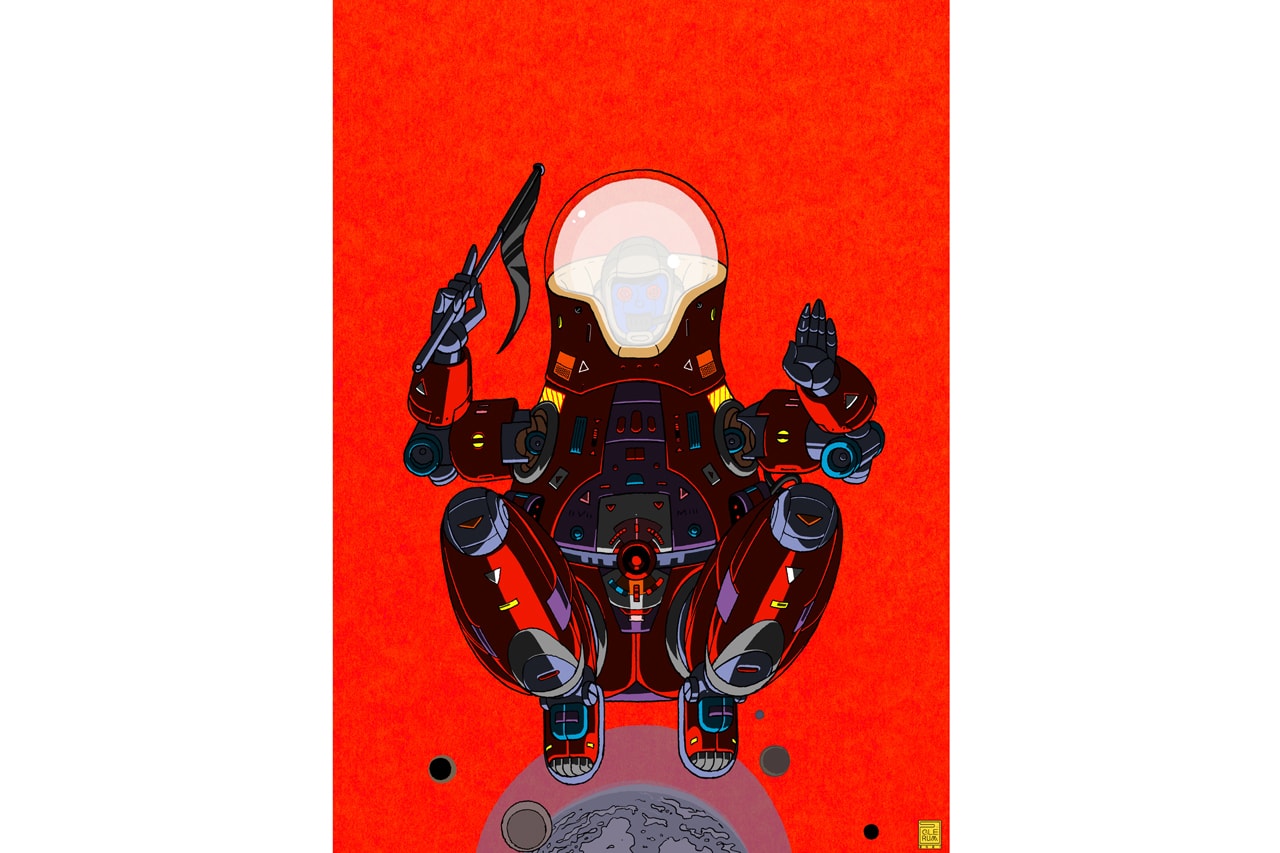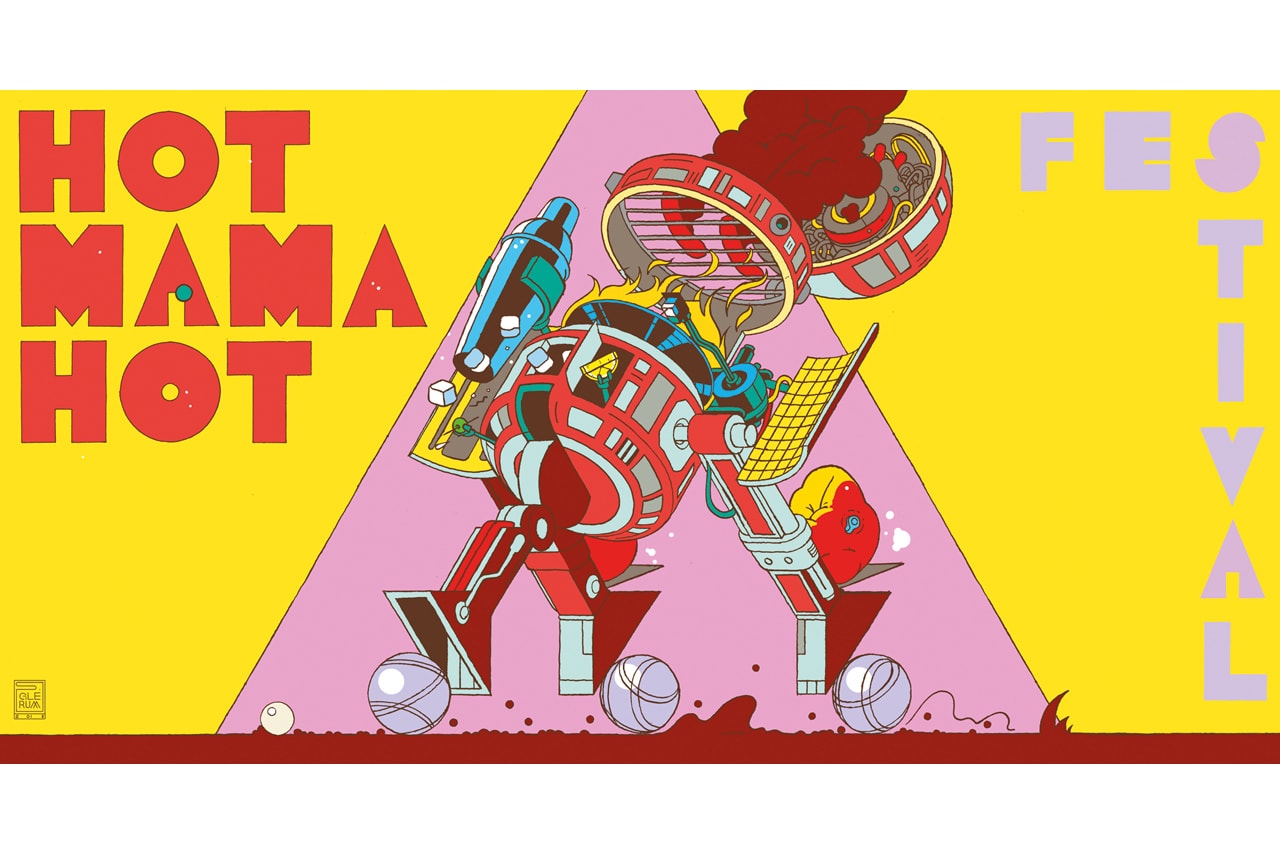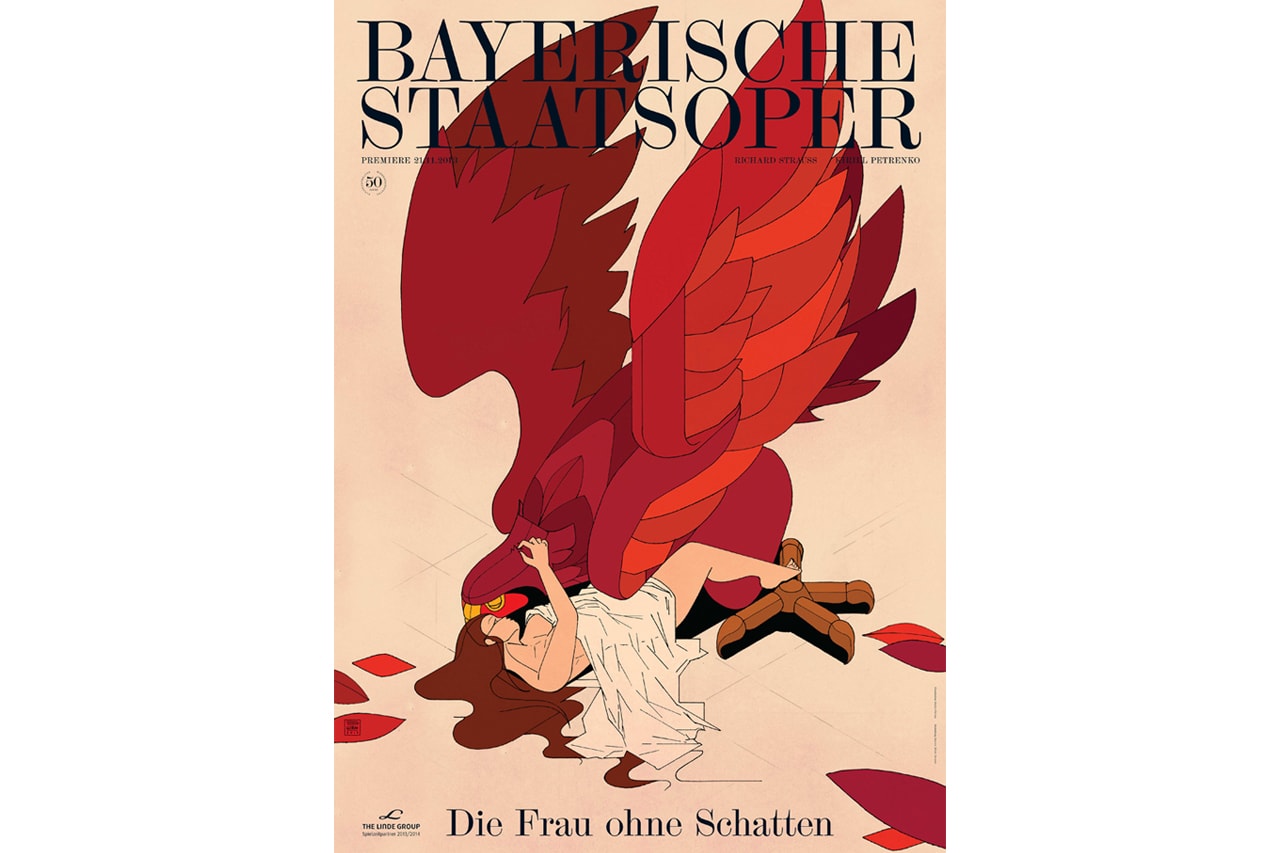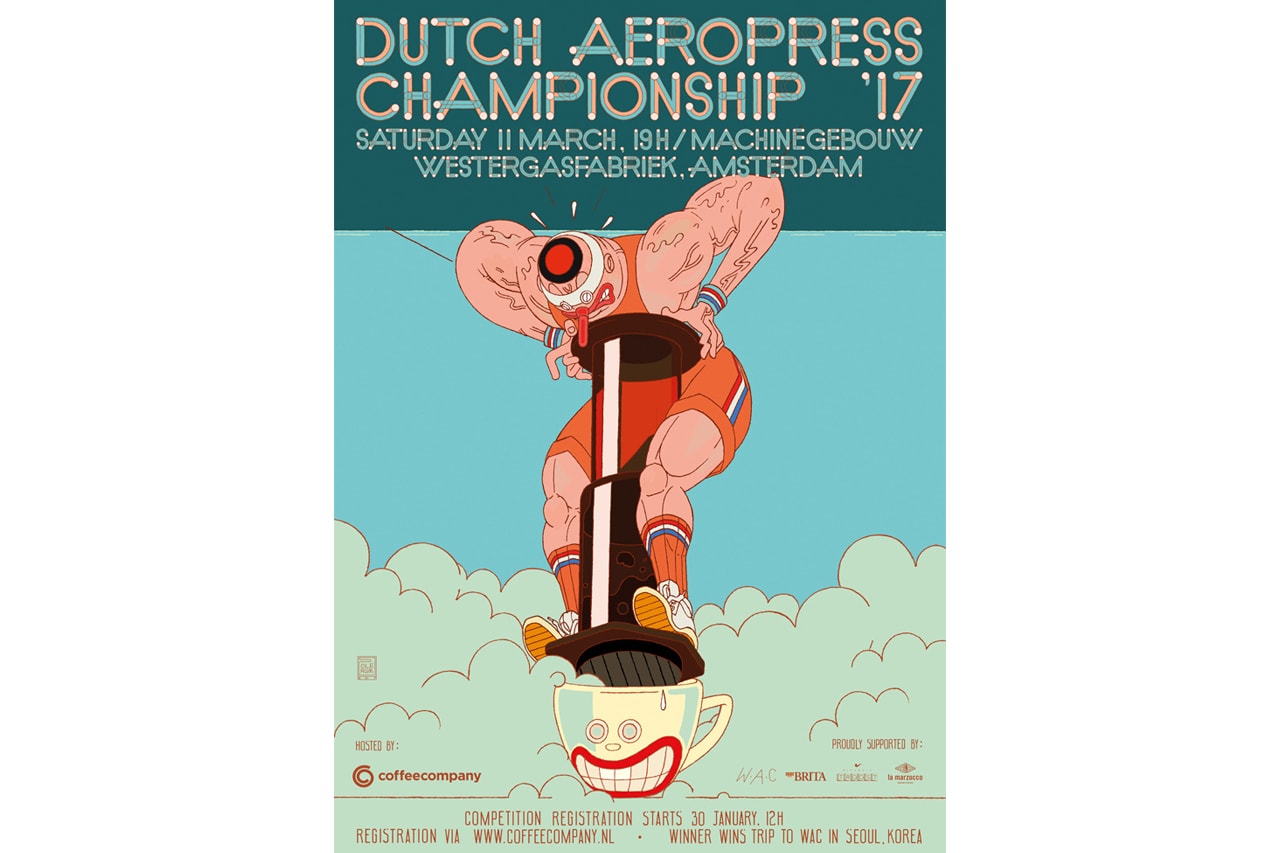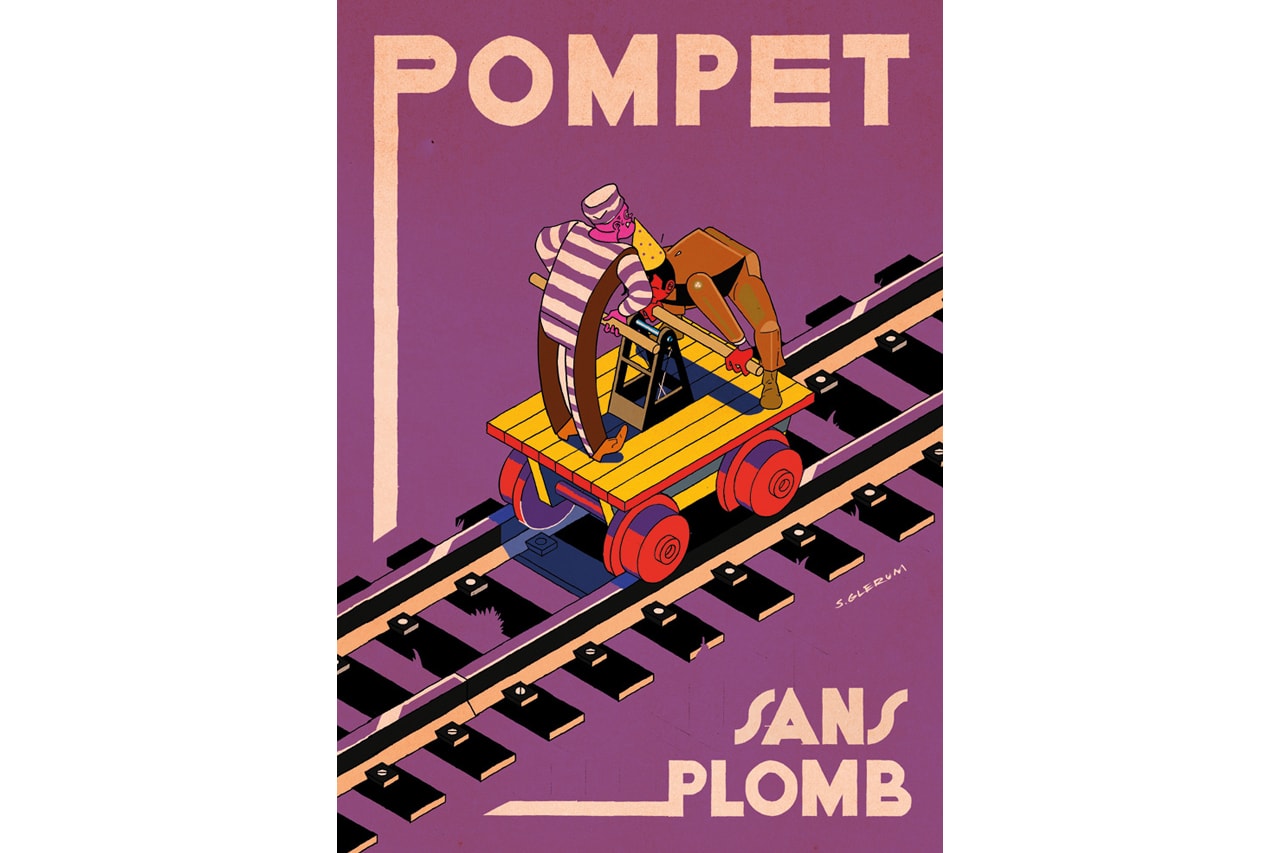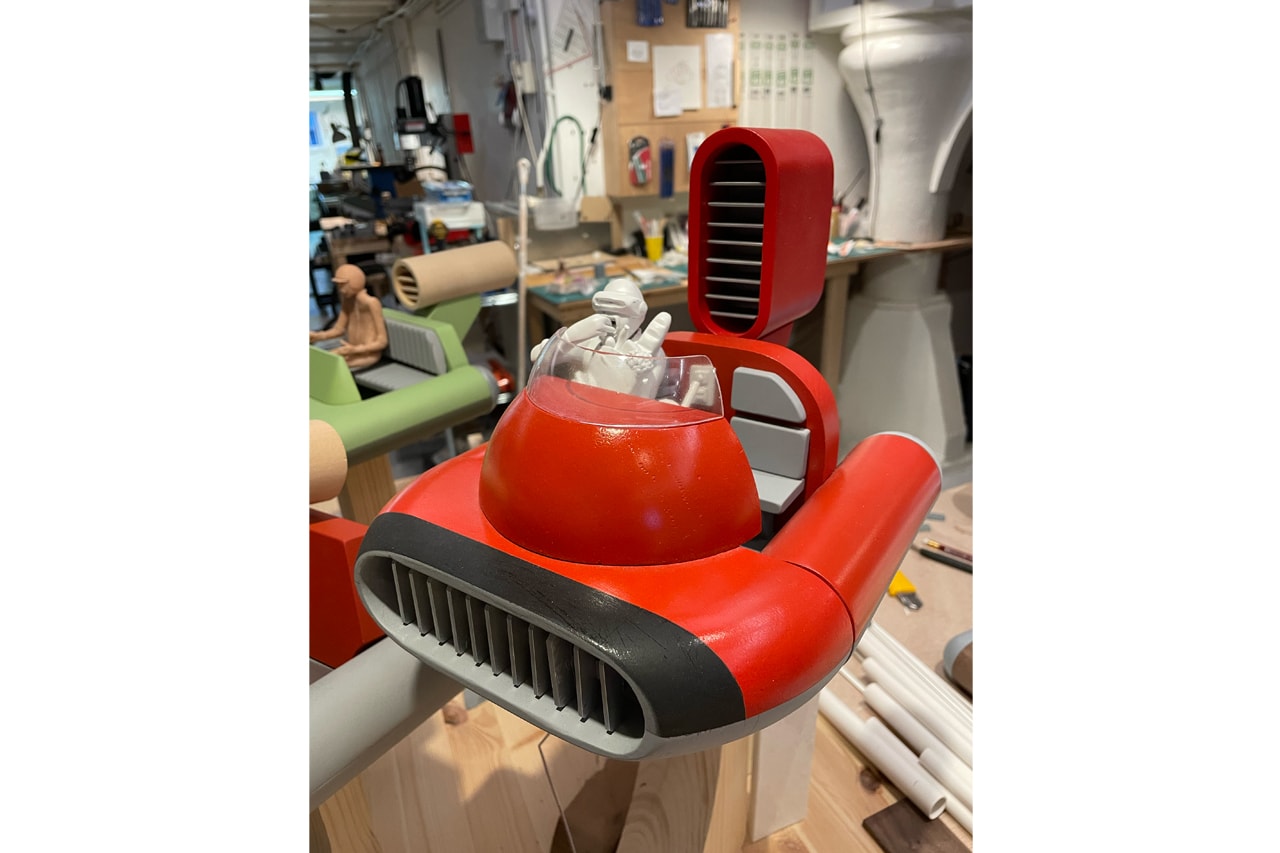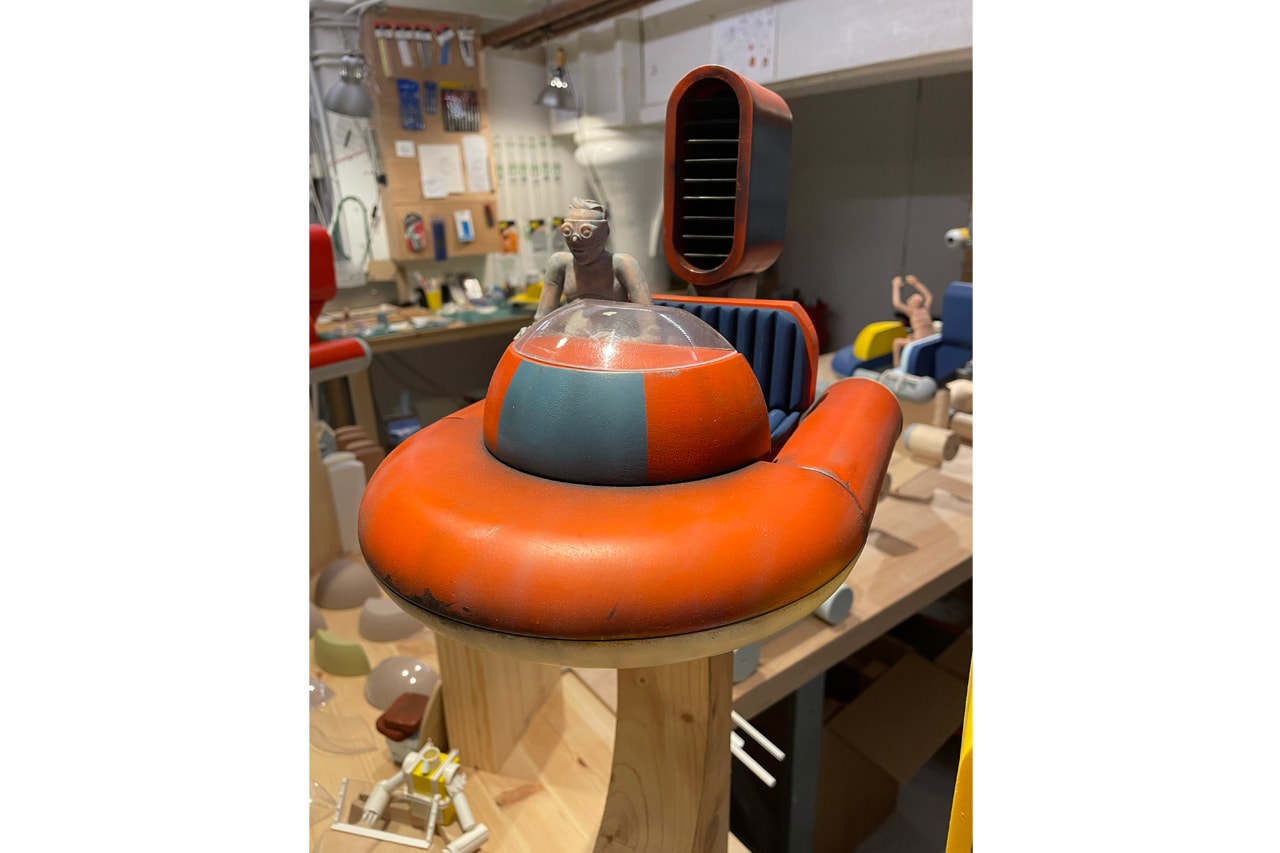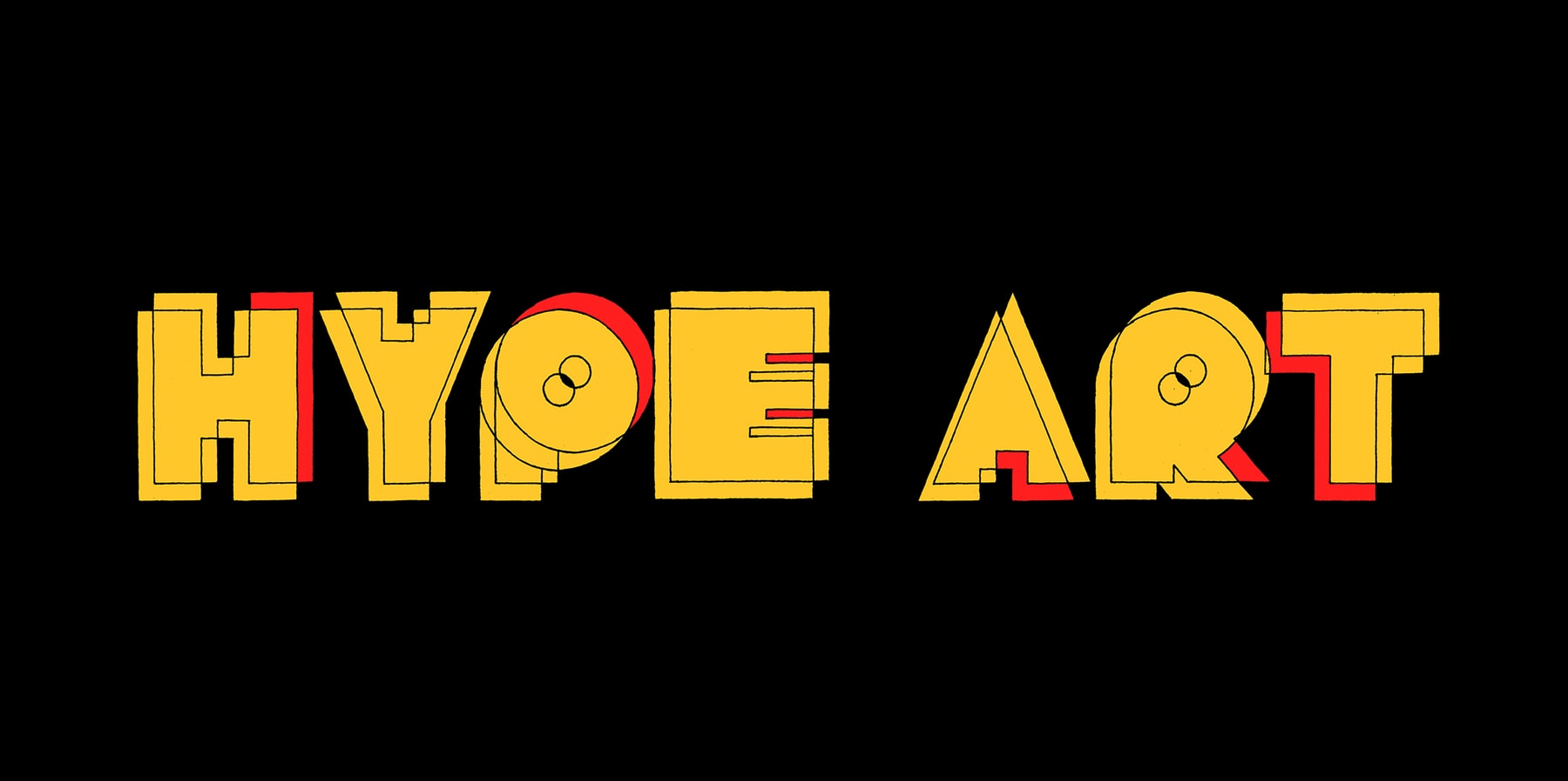

Stefan Glerum lives in Amsterdam, but his work populates an entirely different world. One filled with robots and spaceships, mathematical grids and grotesque beings — a colorful aesthetic inspired by the melting pot of influences that raised him — from Art Deco and the Bauhaus to Futurism and Constructivism.
Having attended Breda University in the Netherlands, Glerum developed his own mark by assisting legendary Dutch architect, graphic designer and cartoonist Joost Swarte. “His clear line and that of Ever Meulen are a constant source of joy for me,” Glerum told HypeArt.
Vintage beer posters, Studio Ghibli, the Star Wars cantina scene all come to mind when viewing Glerum’s work — but while there is a narrative being told, he leaves the viewer to piece together the rest of the story outside the confines of the page. In this way, his work is also inspired by the great concept artists, such as Ralph McQuarrie.
Like his mentor, Glerum has worked across disciplines — from bottle artwork for Jägermesiter, various record covers and festival posters, to an upcoming print release and creating a stained glass facade at the Ymere housing corporation in Amsterdam.
For the latest installment of Pen & Paper, we spoke to Stefan Glerum to discuss his range of influences, how he approaches his eccentric figures, and his newfound love of woodworking. Read the full interview below.
“You can combine these different interests into somewhat of a melting pot.”
How did you get started with art? Take us back.
As a kid I was always interested in drawing. In high school I did graffiti and that made me very interested in typography. At the same time I really loved looking at books with concept art for sci-fi movies. At a certain point during a trip to Rome I came across a painting by the futurist Giacomo Balla and that kind of made me realize you can combine these different interests into somewhat of a melting pot of design/illustration/art. So I went to art school to figure out how to do this.
Are there particular artists or periods in art and design that greatly influenced you?
So I mentioned Giacomo Balla, ever since stumbling upon his work I’ve been very interested in early 20th century avant-garde art and design, especially futurism. I love the typography and posters from that period, Fortunato Depero especially. Geometric shapes played a big role in how that kind of design language came to be, that has been something I figured out when I would start to design type myself with rulers and compass.
These kinds of design choices were also visible in more psychedelic design in the ‘60s and ‘70s with a kind of groovy edgy to it — designers like Milton Glaser and Heinz Edelmann would use that. And of course, I’m very influenced by Joost Swarte whom I worked for as an assistant when I was 20 or so. His clear line and that of Ever Meulen are a constant source of joy for me.
“It’s a bit of a mix for me.”
How about shows or films? Your work particularly caters to science-fiction, especially, robots and space exploration — like the concept artwork of Star Wars’ Ralph McQuarrie.
I very much like the form language in sixties sci-fi like the Thunderbirds, or 2001: A Space Odyssey. Also because it has this geometric basis. I don’t like overcomplicated spaceship designs like you see in a lot of current sci-fi. Ralph McQuarrie has this beautiful hand of drawing, I really enjoy his pencil sketches that have this very personal feel. I think other examples of movies that are very inspiring for form language are those by Jaques Tati, like Playtime. Also I really enjoy the humorous situations in that film where modern life clashes with the main character.
Every aspect of your compositions, be it the robot head or the ship, is precisely laid out mathematically. How do you approach your artwork — from earliest idea to final execution?
It depends on the type of drawing, but for something where I’ve laid out an idea, it starts with a couple of simple sketches to figure out the composition. When I’m happy with that, I’ll switch to a larger sheet of nice paper and use pencil and rulers to layout a grid where I can build up the shapes. Most of the ‘hard edges’ are drawn with rulers, the curves and organic shapes I do freehand. I usually start inking with china ink and a dipping pen when I am happy with certain shapes and I want to make them permanent — also to have not too much confusion in the amount of sketch lines that pile up. So it’s not making the whole image in pencil and than inking everything after, it’s a bit of a mix for me. Depending on the type of project, I could do color by hand with watercolors, or scan the inked drawing and add color digitally.
“Normally I try to find a solution that takes me one-to-three days.”
As this process must be time-consuming, how long does each sheet of robot heads take to create? How about the larger pieces?
For that type of sheet, it’s pretty fast. Those sheets were more like exercises for me, trying to find interesting shapes. So that would maybe be half a day. For more complex drawings that require perspective, where I look at reference material, place figures in a setting, have figures interact with each other — it can take days and days. There are very complex drawings that took me weeks to finish, but normally I try to find a solution that takes me one-to-three days.
Is watercolor and gouache your choice medium?
For those sheets, watercolor works like a charm. You can apply it really neatly as long as the surface doesn’t get too large. I’ve also used Ecoline, which is a kind of non-pigmented ink that has really bright colors. I’ve tried gouache from time-to-time, but still need more exercise with that. Another way of making nice originals is doing all the colors in acrylics first and add the linework last with a technical pen. Not the fastest way of working though.
“You start to think in geometric shapes as building blocks again.”
Music is a big part of your work, be it through a band poster or record sleeve. What music are you most into?
I think it all started with ’80s and ’90s hip hop for me, and through that I became very interested in sampling and what the sampling sources were for those records. So I learned a lot about funk, soul, disco, jazz etc. — because I wanted to create tracks myself. And actually that whole approach made me interested in a lot more kinds of music, mostly from the sixties. So I guess my taste would be very eclectic, although I tend to go for a bit more ‘beefy’ music than something ethereal. At the studio, I play a lot of ’90s hip hop, electro, house, punk and psychedelic music. From time-to-time, I still make music myself or do some sound design for my animations with a sampler, old records and some analog synths.
You’ve also mentioned that animation and wood sculpture are new explorations for you. What have been some of the challenges with working in three dimensions and in animation?
So the interesting thing in translating your work into 3D is you start to notice things that might look good in a drawing that will not look good when you try to sculpt or make them in that extra dimension. Also some shapes you’ve drawn cannot really exist in 3D, so you have to find other ways of approaching that shape. Apart from that, woodworking takes some time to learn and understand how to apply it, but YouTube is an amazing place for that. The interesting thing I discovered is that when using woodworking machines, you start to think in geometric shapes as building blocks again — the same way I would approach typography or stylized drawings.
Doing animation I’ve learned that you cannot really calculate how something is going to be interesting, funny, or dynamic before-hand — it’s just trying stuff out and fiddling with it until it works. But I like making simple animations that are funny, and maybe a bit uncomfortable and leave something to the imagination.
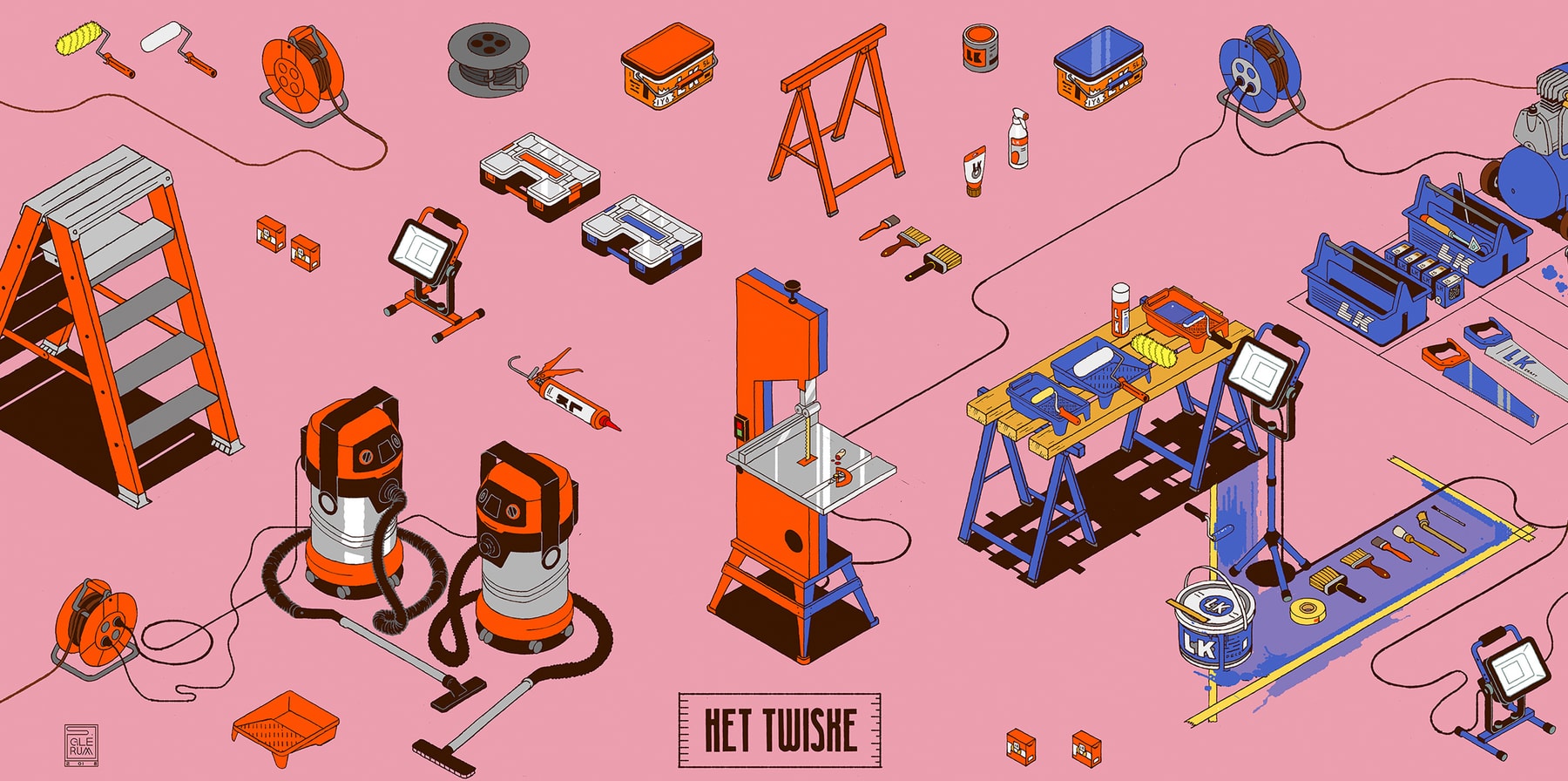
“Spark the imagination of the viewer.”
Your characters could easily have their own cartoon show. Is this something you’ve always aspired to work on and what would your ‘dream’ project be?
Making an animated show would simply be making a story and I’m not that interested in writing that haha. I think I would rather like to work on short animations that give something of an atmosphere, something of a concept or idea, and just spark the imagination of the viewer. That’s also what I like to see: something that makes me wonder a bit about what I’ve just seen.
What are some projects we should look forward to that you are working on now?
I’m doing various commissions and spending a lot of time on my sculptures. I really enjoy how working in 3D gives me a lot of ideas, and how it makes me want to do more experimentation, so that’s what I’m trying to spend as much time as possible.
How about exhibitions?
Hopefully very soon I’ll be able to organize a nice exhibition with all of my sculptures!
